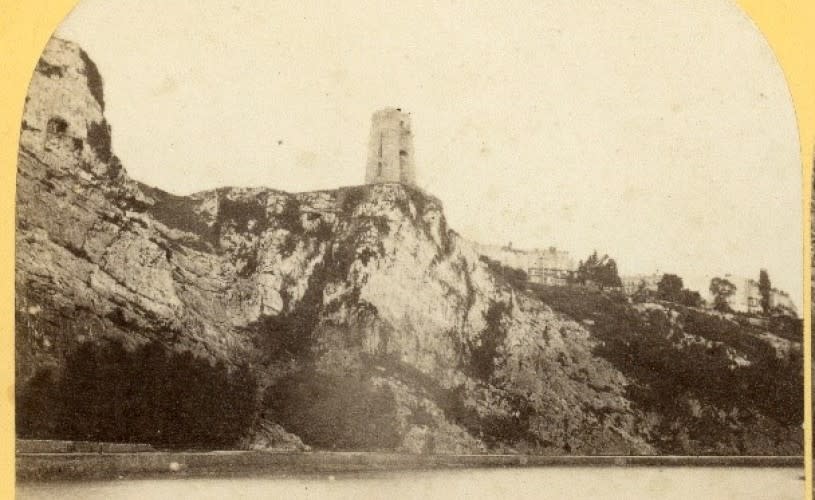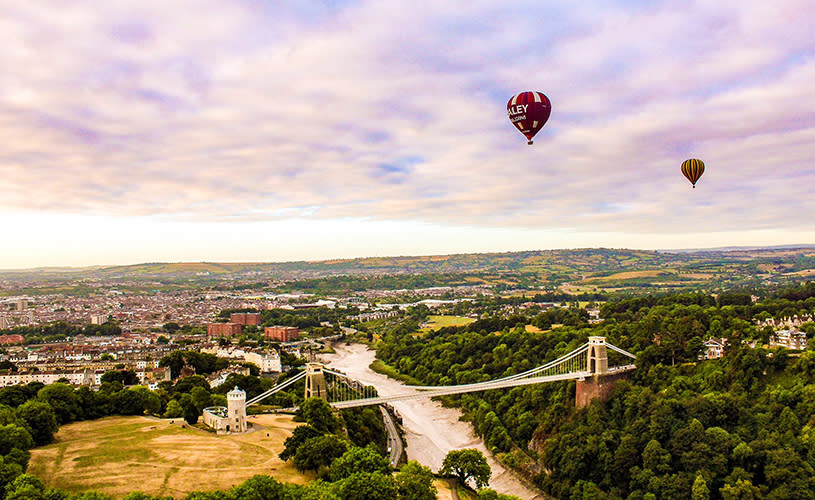The Clifton Suspension Bridge is probably Bristol’s most well-known landmark, but did you know that it was almost not completed? For nineteen years, the two towers of the bridge were left abandoned, with no suspension chains and no work taking place on site.

Image - Clifton Suspension Bridge
The project to build a bridge over the River Avon began in 1754 when the Bristol wine merchant, William Vick left £1000 in his will for a new bridge that he believed would be ‘a great publick utility’. In 1829 a competition was held to find the most suitable design for a bridge. After much deliberation, the young engineer, Isambard Kingdom Brunel won the contract. This was his first major commission. Construction work began in 1836 and by 1843 the abutments and the two towers of the bridge had been completed.
However, at this point all the funds had dried up. To pay off debts, in 1853 all the ironwork that had been made for Clifton was sold off and re-used for another of Brunel’s great bridges: the Royal Albert Bridge at Saltash in Devon.

Image - Clifton Suspension Bridge
It was not until after Brunel’s death in 1859 that efforts began again to finish the bridge. Two engineers – John Hawkshaw and William Henry Barlow - completed the Clifton Suspension Bridge in memory of their fellow engineer when the opportunity arose to recycle the chains from Brunel’s Hungerford footbridge in London which was being demolished.
Construction work began on site in 1862 and in 1864 the bridge was finally opened to the public. Today, the bridge still stands as a fitting memorial to the ingenuity and skill of the Victorian engineering profession.
Did you know?
- Engineer, Isambard Kingdom Brunel was only 23 when he won the contract for the bridge
- The majority of the bridge’s wrought ironwork is original and has not been replaced
- Approximately three million cars cross the bridge each year
- In 2002, twelve vaulted chambers were rediscovered inside the Leigh Woods abutment
- The bridge has been cared for by a charitable trust since 1952
- The £1 toll paid by vehicles is used to carry out a year-round programme of maintenance works

Image - Clifton Suspension Bridge
Clifton Suspension Bridge Museum
On the Leigh Woods side of the bridge, you'll find a free Museum telling the story of the bridge and its engineers.
There's information on the maintenance of the historic structure over the years; including photographs of the fearless employees who would 'walk the chains' without safety equipment to paint the bridge or string up illuminations; as well as information about the local flora and fauna and the impressive feats and historic events that have taken place in this incredible setting. Museum is open daily from 10:00am to 5:00pm and has a gift shop and toilets. A Coffee Cart is located opposite and serves hot and cold drinks, cakes and snacks during the summer months.

Image - Clifton Suspension Bridge Museum
Between Easter and October, adventurers can book a hard hat tour of the vaults below the Leigh Woods tower, built by Brunel between 1836 and 1843. Descending a ladder on the side of the gorge, you'll explore two of the twelve impressive chambers that support the bridge and hear about their construction and purpose. Tours are available for adult and family visitors (children aged 7+) but are always in high demand, so it is best to book early to ensure a space.
To be amongst first to find out when vaults tour tickets are released, and to read more about the bridge's history and other events, sign up to the Museum newsletter.
To explore more historical images of the bridge, visit the Trust’s online archive catalogue.

Image - Clifton Suspension Bridge vault tours
Read more about Bristol's most historic and iconic attractions:





